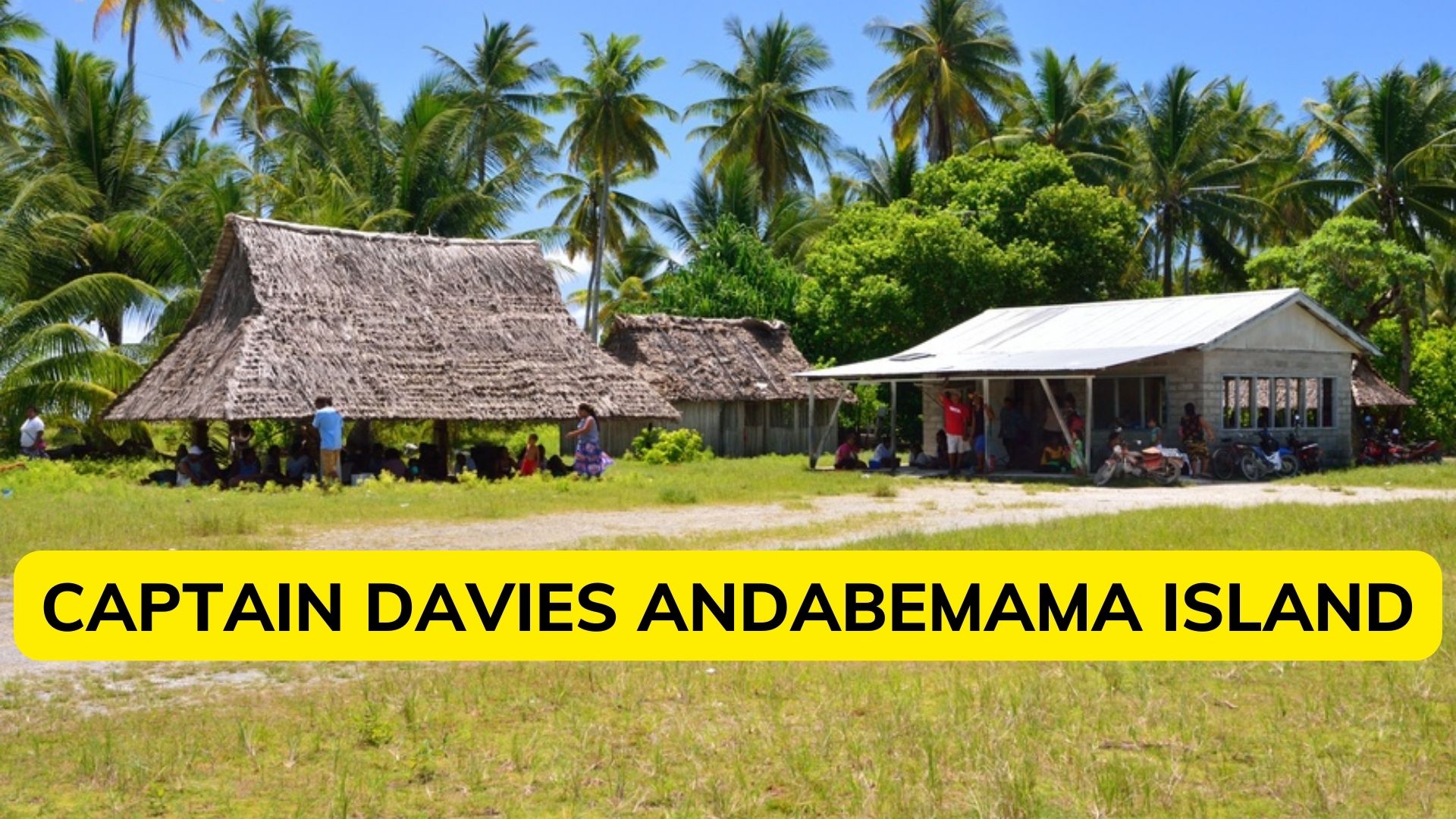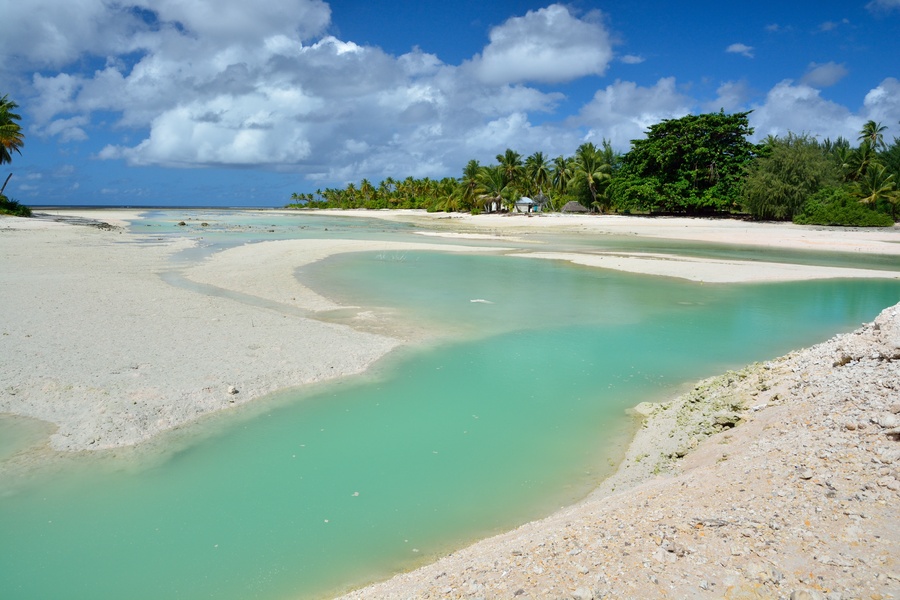Captain Davies And Abemama Island Connection
At Abemama Island, where Captain Davies first landed in May 1892, he set up a protectorate government and raised the Union Jack. Before this, Kiribati had a unique traditional form of governance. Each island was a separate entity that was ruled either by the Uea (king), particularly in Northern Kiribati and Abemama, or by a traditional group of leaders (oldest and tribal chiefs), unimwane (old men), under the mwaneaba system.
Author:Jane RestureSep 30, 202213.8K Shares295.7K Views

At AbemamaIsland, where Captain Daviesfirst landed in May 1892, he set up a protectorate government and raised the Union Jack.
Before this, Kiribati had a unique traditional form of governance. Each island was a separate entity that was ruled either by the Uea (king), particularly in Northern Kiribati and Abemama, or by a traditional group of leaders (oldest and tribal chiefs), unimwane (old men), under the mwaneaba system. After consultation with the locals, the British established their dominion.
In the second half of the century, British influence started to become apparent. They came here to establish a settlement, dominate, and act as the central authority. They created law and order, as well as defended the rights of the visitors who lived on the islands. In actuality, they were distinct from the merchants and missionaries who had arrived earlier.
During that period, a residence commissioner chosen from Britain led the government. He was in the top position.
Under this colonial authority, laws were written to establish peace and order, fund the administration, and regulate the actions of Europeans.
To develop and maintain high standards of public health and welfare, schools were established and regulations were drafted.
This government's colonial strategy during its formative years was egotistical and imperialist. The British took over the administration and exports of this resource once phosphate was found in Banaba. At that time, there were no residents with the authority to oversee the operations of the government.
The Te Uea system was abandoned by the British in the late 1960s, and they also established communities and nominated individuals to serve in island governments throughout all of the islands. The local population supported this group. Additionally, more locals started becoming engaged in the administration and affairs of the Gilbert and Ellice Islands during this period.
The notion of running our affairs grew as locals became more and more active in politics. Political leaders in Kiribati saw how unjust this colonial control was and was even more determined to achieve independence. There was a tremendous desire to rule ourselves, and efforts to do so were made. Britain eventually granted its consent, although first not taking it seriously.
Abemama Island - Captain Davies First Landed In May 1892
In 1841, the island was surveyed by the US Exploring Expedition. Abemama was ruled by a single supreme ruler from the middle of the 19th century until his death.
This differs from the Southern Gilbert Islands (from Nonouti southward), where elder males (known as unimwane) congregated in the maneaba to elect a government for everyone, and the Northern Gilbert Islands (where family groupings, or kainga, picked their leaders).
Although some European sources refer to the Abemama main family as "the Gilbert Islands ruling family," local sources acknowledge that the unimwane still hold a significant amount of power even on Abemama and that it would be logistically challenging to rule the entire Gilbert Islands as a single entity.
The prominent Abemama family, however, has a long history of leading the group as its general commander; under Tem Binoka's rule, they also had control over Kuria and Aranyaka. The Abemama family is still held in high regard and respect today.
On the island of Abemama, Captain Davis of the HMS Royalist (1883) issued the first declaration of a British Protectorate on May 27, 1892. In or about 1910, the Abemama Post Office started welcoming customers.
A Traditional Welcome In Abemama For New Visitors
- Tourists visiting the island for the first time should start at Kabangaki village.
- Visitors are asked to visit traditional shrines and cultural sites and are advised to bring sticks of tobacco to donate to the shrines.
- Every time an elders' gathering is taking place in a village or maneaba, visitors are asked to drive safely.
- When visiting the villages, it is advised that visitors especially women conceal their bodies.
- Every maneaba or local person's home has a sitting custom that stipulates that you must sit and fold your legs; it is impolite to do otherwise.

ABEMAMA ISLAND - 1982
What's Unique About Abemama Island?
There are several historical sites and cultural traditions on the island of Abemama. While visiting the island, you must hear an oratory history of Abemama since it will help you comprehend the historical landmarks and local customs.
The pristine sand beaches and clear waters of Bike Islet and Abatiku Island are both must-see locations. When the age of the royal family started, its cultural history began.
People Also Ask
Who Was Captain Davis?
The Acton minute man company was commanded by Isaac Davis. On April 19, 1775, he became the first colonial officer to die in the American Revolution.
What Does Captain Davis Claim To Be On His Ship?
His declaration that he is the "law and prophets" aboard his own ship means that he can abuse M'ling and cast Prendick adrift.
When Captain Davies First Landed In Abemama Island?
May 1892.
Conclusion
In May 1892, Captain Davies established a protectorate government and raised the Union Jack on Abemama Island. Abemama Island is best place to visit in summar.
A sizable lagoon surrounds the islets. Causeways enable vehicle passage between the several islands in the eastern part of the Abemama atoll. The little islands of Abatiku and Bike are located on the atoll's southwest border.

Jane Resture
Author
Since she embarked on her first world trip in 2002, Jane Resture spent the past decades sharing her personal journey and travel tips with people around the world. She has traveled to over 80 countries and territories, where she experienced other cultures, wildlife she had only read about in books, new foods, new people, and new amazing experiences.
Jane believes that travel is for everyone and it helps us learn about ourselves and the world around us. Her goal is to help more people from more backgrounds experience the joy of exploration because she trusts that travel opens the door to the greatest, most unforgettable experiences life can offer and this builds a kinder, more inclusive, more open-minded world.
Latest Articles
Popular Articles
